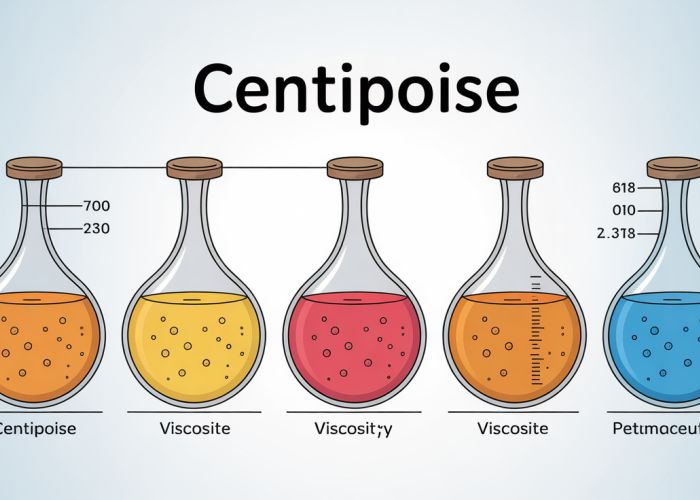Understanding fluid dynamics often requires grappling with viscosity, and a key unit for measuring this property is centipoise. Viscosity, a fluid’s resistance to flow, directly relates to centipoise. The Brookfield viscometer instrument provides precise measurements of viscosity, expressed commonly in centipoise. Scientists and engineers regularly use centipoise when working with fluids in applications like petroleum engineering, where understanding a fluid’s what is centipoise and properties is critical for optimization.

Understanding Centipoise: A Comprehensive Guide
This guide aims to provide a thorough understanding of centipoise (cP), focusing on its definition, relationship to viscosity, practical applications, and methods of measurement. The core objective is to definitively answer the question "what is centipoise?" in a clear and accessible manner.
Defining Viscosity and Its Units
Before delving into the specifics of centipoise, it’s crucial to understand the broader concept of viscosity.
-
What is Viscosity? Viscosity is a fluid’s resistance to flow. A fluid with high viscosity is thick and flows slowly (like honey), while a fluid with low viscosity is thin and flows easily (like water).
-
Poise (P): The Base Unit. Viscosity is fundamentally measured in poise (P), named after Jean Léonard Marie Poiseuille. One poise is defined as one dyne-second per square centimeter (1 dyn·s/cm²). It represents the force required to move one square centimeter of one layer of fluid past another at a velocity of one centimeter per second, with a separation of one centimeter.
What is Centipoise? A Closer Look
Centipoise (cP) is simply one-hundredth of a poise. In other words:
- Centipoise Definition: 1 cP = 0.01 P
This smaller unit is preferred for everyday fluids because poise values tend to be quite large. Using centipoise makes the numbers more manageable and relatable.
Relationship to SI Units
While poise and centipoise are common, it’s important to relate them to the International System of Units (SI).
- Pascal-Second (Pa·s): The SI Unit. The SI unit for viscosity is the pascal-second (Pa·s).
- Conversion: 1 Pa·s = 1 N·s/m² = 1 kg/(m·s) = 10 P = 1000 cP
- Millipascal-Second (mPa·s): Often, millipascal-seconds (mPa·s) are used, and since 1 mPa·s = 1 cP, they are numerically equivalent.
Why Use Centipoise?
- Convenience: As mentioned, centipoise provides more convenient numbers for common liquids. For instance, water at room temperature has a viscosity of approximately 1 cP, which is easier to remember than 0.01 P or 0.001 Pa·s.
- Industry Standard: Many industries, including food processing, cosmetics, pharmaceuticals, and petroleum, routinely use centipoise as a standard unit for measuring and reporting viscosity.
Examples of Viscosity in Centipoise
To illustrate the practical meaning of centipoise, consider the following examples:
| Fluid | Viscosity (cP) |
|---|---|
| Air | ~0.018 |
| Water (20°C) | ~1.0 |
| Milk | ~3.0 |
| Olive Oil | ~84 |
| Honey | ~2,000 – 10,000 |
| Peanut Butter | ~250,000 |
These examples show a wide range of viscosities and demonstrate how centipoise allows us to compare different fluids easily.
Factors Affecting Viscosity (and Therefore Centipoise Values)
A fluid’s viscosity, measured in centipoise, is not constant and can be affected by several factors:
- Temperature: Generally, viscosity decreases as temperature increases. Heating a fluid makes it flow more easily.
- Pressure: For liquids, pressure usually has a minimal effect on viscosity. However, for gases, viscosity increases with pressure.
- Composition: The specific molecules present in the fluid and their interactions directly impact viscosity. Adding solutes can significantly alter a solution’s viscosity.
- Shear Rate: Some fluids are non-Newtonian, meaning their viscosity changes with shear rate (the rate at which the fluid is deformed). Examples include paints and certain polymers. Newtonian fluids, like water, have a constant viscosity regardless of shear rate.
Measuring Viscosity and Centipoise
Several methods are used to measure viscosity, leading to a centipoise value. Here are some common techniques:
-
Viscometers: These instruments measure the resistance of a fluid to flow under defined conditions. There are various types:
- Capillary Viscometers: Measure the time it takes for a fluid to flow through a narrow tube.
- Rotational Viscometers: Measure the torque required to rotate an object in the fluid.
-
Falling Ball Viscometers: Measure the time it takes for a ball of known size and density to fall through the fluid.
-
Vibrational Viscometers: Measure the damping of a vibrating element immersed in the fluid.
The choice of method depends on the viscosity range, the required accuracy, and the fluid’s properties. Understanding "what is centipoise?" is essential when interpreting the results obtained from these measurements.
FAQs: Understanding Centipoise
Here are some frequently asked questions to help you further understand centipoise and its application.
How does centipoise relate to viscosity?
Centipoise (cP) is a unit of dynamic viscosity. Viscosity, in simple terms, measures a fluid’s resistance to flow. Therefore, centipoise directly quantifies the viscosity of a substance. A higher centipoise value means the fluid is more viscous and flows less easily.
What’s the difference between centipoise and poise?
Centipoise is simply poise divided by 100. Poise is the base unit of dynamic viscosity in the CGS (centimeter-gram-second) system, but centipoise is more commonly used because it results in more manageable numbers for many everyday fluids. 1 cP = 0.01 Poise.
Why is understanding what is centipoise important?
Knowing what is centipoise allows accurate measurement of a fluid’s flow characteristics, vital in industries like food processing, paints, and pharmaceuticals. Controlling and adjusting viscosity (measured in centipoise) is crucial for product quality, processing efficiency, and predicting fluid behavior.
Can temperature affect the centipoise of a liquid?
Yes, temperature significantly affects the viscosity (and thus the centipoise) of liquids. Generally, as temperature increases, a liquid’s viscosity decreases, and therefore its centipoise value drops. It’s essential to specify the temperature when discussing what is centipoise of a particular fluid.
And there you have it! Hopefully, you now have a solid understanding of what is centipoise. If you ever get mixed up, come on back for a refresher!